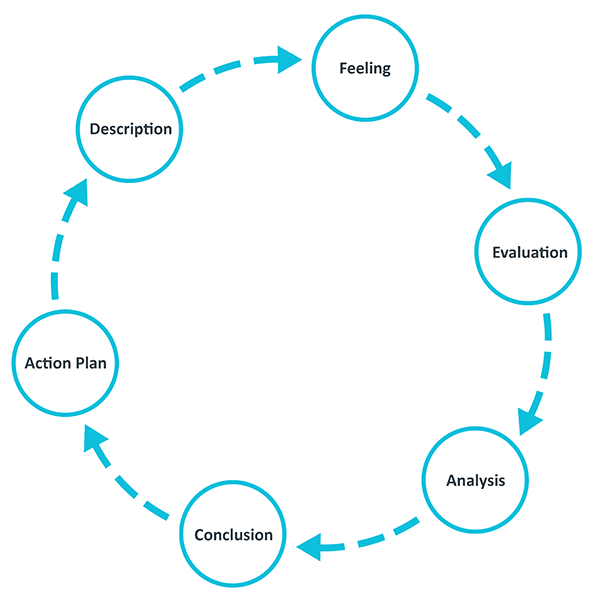Gibbs' Reflective Cycle
Gibbs' Reflective Cycle
One of the most famous cyclical models of reflection leading you through six stages exploring an experience: description, feelings, evaluation, analysis, conclusion and action plan.
Overview
Gibbs' Reflective Cycle was developed by Graham Gibbs in 1988 to give structure to learning from experiences. It offers a framework for examining experiences, and given its cyclic nature lends itself particularly well to repeated experiences, allowing you to learn and plan from things that either went well or didn’t go well. It covers 6 stages:
- Description of the experience
- Feelings and thoughts about the experience
- Evaluation of the experience, both good and bad
- Analysis to make sense of the situation
- Conclusion about what you learned and what you could have done differently
- Action plan for how you would deal with similar situations in the future, or general changes you might find appropriate.
- The model – each stage is given a fuller description, guiding questions to ask yourself and an example of how this might look in a reflection
- Different depths of reflection – an example of reflecting more briefly using this model
The model

Description
Here you have a chance to describe the situation in detail. The main points to include here concern what happened. Your feelings and conclusions will come later. Helpful questions:- What happened?
- When and where did it happen?
- Who was present?
- What did you and the other people do?
- What was the outcome of the situation?
- Why were you there?
- What did you want to happen?
Example of 'Description'
| Group work assignment |
| For an assessed written group-work assignment, my group (3 others from my course) and I decided to divide the different sections between us so that we only had to research one element each. We expected we could just piece the assignment together in the afternoon the day before the deadline, meaning that we didn’t have to schedule time to sit and write it together. However, when we sat down it was clear the sections weren’t written in the same writing style. We therefore had to rewrite most of the assignment to make it a coherent piece of work. We had given ourselves enough time before the deadline to individually write our own sections, however we did not plan a great deal of time to rewrite if something were to go wrong. Therefore, two members of the group had to drop their plans that evening so the assignment would be finished in time for the deadline. |
Feelings
Here you can explore any feelings or thoughts that you had during the experience and how they may have impacted the experience. Helpful questions:- What were you feeling during the situation?
- What were you feeling before and after the situation?
- What do you think other people were feeling about the situation?
- What do you think other people feel about the situation now?
- What were you thinking during the situation?
- What do you think about the situation now?
Example of 'Feelings'
Order Now